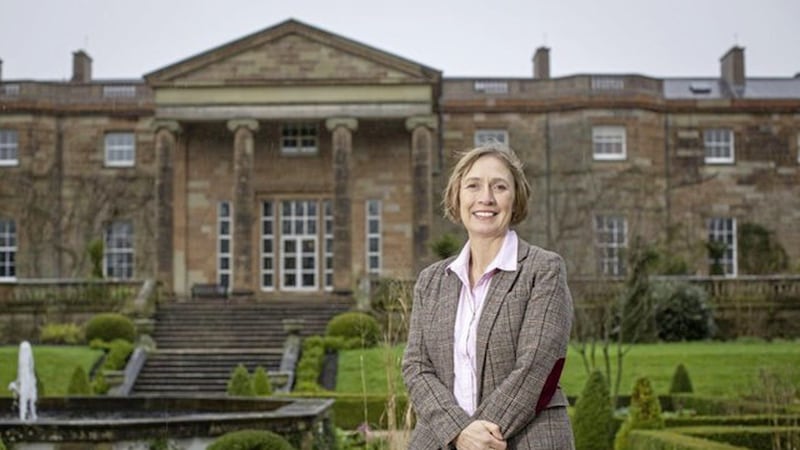AT HILLSBOROUGH Castle, we recently hosted A Beginner's Guide to the Science of Compost as part of the NI Science Festival. Budding gardeners joined us and learnt more about how to promote healthy soil and optimum growth of their plants. For those who were unable to join us, we wouldn't want you to miss out on our top tips.
The real 'science' application of the composting process is in making the compost, but there is of course science behind why we use it. We add compost to improve the structure of the soil, which in turn increases air flow and aids water retention.
Using compost also stabilises the pH of the soil the optimum is 6.5 (the figure which denotes the acidity or alkalinity of a solution) and supports lots of the essential bacteria that are already existing and living in the soil.
In addition, the compost adds many more bacteria, fungi and other soil micro-organisms. These break down the organic matter and allow the plant to effectively use the nutrients released, thus promoting healthy growth.
By adding compost, you're increasing the organic matter in the soil. If the soil texture is very heavy and clay-like, this will lighten it, and if the soil is very sandy and free-draining, it will enable retention of moisture.
Adding compost also encourages earthworms, and if you're putting compost on top of your soil it will help reduce erosion.
When making compost, it is important to get the carbon to nitrogen ratio right because the microorganisms involved need balance. Carbon provides energy and nitrogen is used for protein production. However if you have too much carbon (the 'brown' compost materials such as chopped sticks, straw and cardboard) the decomposition is very slow as it doesn't break down quickly enough and the heap stays cold, while too much nitrogen (such as your grass clippings) causes the compost to become smelly, soggy and very unpleasant. The balance we are aiming for is around 25 carbon to 1 nitrogen.
At Hillsborough Castle, when preparing to make our compost we shred or chip all our shrubby prunings and add it to the compost bays along with soft green nitrogen materials, building it up quite quickly – adding a lot of material at once starts the heating process.
For nitrogen, add grass clippings, soft prunings, annual plants, fruit and veg peelings, cut flowers, tea bags and coffee grounds. For carbon, add shredded cardboard, straw, chopped harder prunings or shredded sticks.
Remember the finer you shred the material, the faster the process will be. Avoid diseased plants, perennial weeds (dandelions, perennial nettles or creeping buttercups), meat, fish, dairy, cooked food and cat or dog litter.
The pile heats for two to three weeks, essentially cooking up our compost. The microorganisms get to work, using the carbon for energy and nitrogen to produce protein and then cool off.
We then use a telehandler to turn the whole pile, but at home you'd move it from one compost pile to another, which gets the heating process going again and allowing oxygen in.
We turn ours every four to six weeks, and if you get the balance just right you should produce compost in two to four months and it should always have a nice, earthy smell. If your pile is carbon-heavy, it can take up to a year.
:: For more events at Hillsborough Castle as part of NI Science Festival, visit nisciencefestival.com. You can also visit Hillsborough Castle's stunning gardens in all seasons. Opening times and ticket prices are available at hrp.org.uk/hillsborough-castle.









